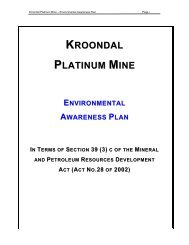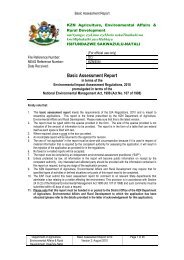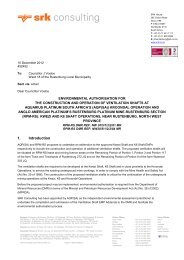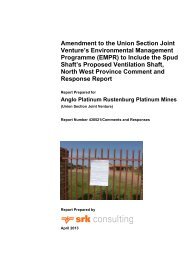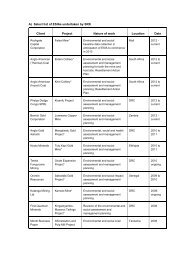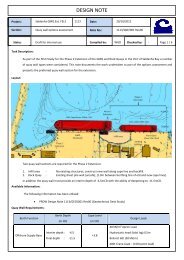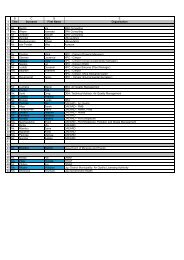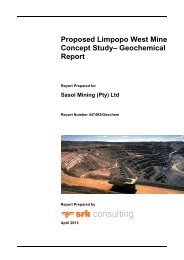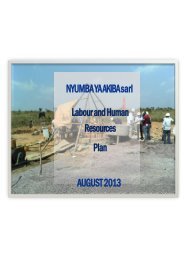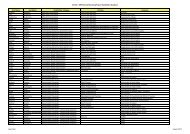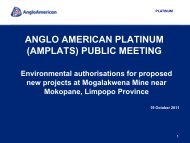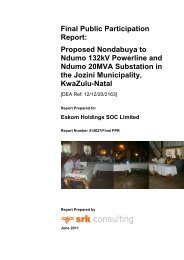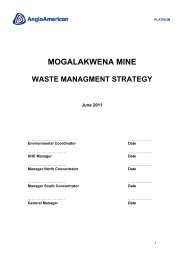Biodiversity (1 - SRK Consulting
Biodiversity (1 - SRK Consulting
Biodiversity (1 - SRK Consulting
Create successful ePaper yourself
Turn your PDF publications into a flip-book with our unique Google optimized e-Paper software.
Table 4: The expected frequency of occurrence of threatened bird species on and<br />
around Portion 3 of the farm Zuurwater 63.<br />
Probability of occurrence on site<br />
Threatened Status<br />
Species<br />
Regular<br />
resident<br />
Frequent<br />
visitor<br />
Erratic<br />
visitor<br />
Infrequent<br />
vagrant<br />
Near Threatened Chestnut-banded Plover X<br />
Black Harrier<br />
X<br />
Lanner Falcon<br />
X<br />
Sclater's Lark<br />
X<br />
Vulnerable Ludwig's Bustard X<br />
Kori Bustard<br />
X<br />
Martial Eagle<br />
X<br />
Secretarybird<br />
X<br />
Red Lark<br />
X<br />
TOTALS 9 2 2 5 0<br />
These analyses indicate that by far the most important habitats to conserve for<br />
threatened species are the grassy plains and the red sand/dunes, with the bare washes<br />
and pans also important at the times when they are productive after rains. However, the<br />
grassy plains form part of extensive similar habitat in the area, while the red dunes are<br />
more restricted but also much more productive, for livestock and birds alike, including<br />
the Red Lark that is a restricted-range endemic to Bushmanland. The bare washes/pans<br />
(for Chestnut-banded Plover) and gravel fields (for Sclater's Lark) are only really<br />
productive after good rains, while the mountains have nest sites for the Lanner Falcon<br />
when good rains attract large numbers of nomadic insect- and seed-eating birds.<br />
Two Vulnerable species are expected to be regular breeding residents (Ludwig's<br />
Bustard and Red Lark). The Vulnerable Martial Eagle and Secretarybird, and the New<br />
Threatened Lanner Falcon are expected to be regular visitors to the area, when their<br />
prey animals are abundant, but while no sufficiently large trees were seen as likely nest<br />
sites for the Eagle or Secretarybird, the large south-facing cliffs, especially on Hoedkop,<br />
could well support nesting ledges for the falcon, as they apparently do for Verreaux's<br />
Eagle. The Vulnerable<br />
107



